What is a laser headlight
A laser headlight is a front-lighting system that produces high beam forward illumination with laser diodes. Automotive headlights illuminate primarily in a forward direction to provide a clear view of what’s ahead during the nighttime or in inclement weather. The forward lighting devices are generally configured to switch between a low beam and a high beam. The low beam light is designed to illuminate the road a short range in front of the vehicle and has light distribution controlled to avoid giving glare to oncoming and preceding motorists. In contrast to the low beam that constitutes a compromise between an optimal driver visibility and visual comfort of other road users, a high beam is intended to illuminate areas that are further away and provide optimal visibility on the road, with less considerations for glare control.
Forward visibility
Arguably, one of the most demanding requirements for vehicle lighting is to secure the field of view across an effective distance from potential obstacles or hazards when driving at high speeds and on uneven roads. Low beams can’t provide the necessary amount and range of illumination. Inadequate illumination is likely to cause the driver to lose life-critical braking distance or other reaction time for risk avoidance.
The distance at which a stationary obstacle may be detected to avoid a collision depends on how fast the vehicle is moving, the perception-reaction time needed to initiate evasive action, and the distance required to bring the vehicle to a stop. When a vehicle is moving at a speed of 100 km/h (62 mph), a stopping distance of approximately 40 to 50 meters is needed. To this should be added the perception-reaction distance of approximately 30 meters. Therefore, the distance factor in the event of an emergency stop should be in approximately 80 meters. The visibility provided by most low beams fails to reach this visual range. The use of high beams would be needed to illuminate the road ahead for as far as the eye can see.
Lighting technologies
Conventional headlights use halogen or xenon HID lamps to produce the high beam. High beam lighting served by these light sources is significantly limited in performance. The inefficient conversion from electrical to optical power of halogen lamps restricts the lumen output of the high beam light because higher output bulbs would draw a huge amount of power that can drain the vehicle electrical system. Xenon headlamps, which are metal halide lamps that contain xenon gas, have improved efficiency but are far from efficient for automotive applications. Additional optical losses occur with halogen and HID lighting. Much of the light produced by halogen or xenon HID lamps is lost within the headlight assembly, and it is challenging to produce a highly collimated directional beam with these omni-directional radiators for high beam applications. As such, high beam lighting has begun to veer away from bulb-based configurations and embrace solid state lighting technology.
LED lighting has become more of a staple in the past decade and has made its way to high beam lighting. LEDs are semiconductor light sources that promise high power conversion efficiency, excellent reliability and durability, and solid state durability. Their compact size and optical directionality enable cutting edge design and class-leading beam performance. However, the restricted flux density of LEDs sets caps on the range of the high beam.
Laser lighting
Another solid state lighting technology developed slowly in the shadow of LEDs has started to gain attention and is distinguishing itself in automotive applications. Laser diode (LD) systems are redefining standards for high beam lighting. A laser diode is typically a multi-quantum well (MQW) semiconductor device that operates on similar principles as that of a conventional LED. In the LD, however, carrier recombination proceeds mainly through stimulated emission, rather than spontaneous emission. Stimulated emission takes place in an optical cavity where a photon triggers the radiative recombination of an electron and hole to create an additional photon with the same phase, frequency, polarization, and direction of travel as the incident photon.
Stimulated emission enables high efficiency, high current density operation due to the absence of Auger recombination. This “cloning” of photons also results in a stream of coherent photons and highly directional light. In contrast, LEDs suffer efficiency droop when injection current density increases. Their spontaneously emitted photons result in a wide divergence of the light output. Limited current density requires the physical size of an LED package or LED array to increase in order to obtain a high light output. The large light emitting size (LES) and wide beam divergence in the direction perpendicular to the LES make it impossible for an LED headlight to generate a high intensity, collimated beam that can travel a long distance.
Design considerations
Laser lighting enables high light output with much smaller die size, which effectively support the desired focus and collimation for high beam applications. A high beam laser light can provide the driver with visibility over a distance of 600 meters. The visual range, which is the maximum visibility range allowed under the European ECE regulations, is twice that of a conventional headlight. Under high drive current operation, laser diodes produce a significant amount of heat that has to be dissipated from the junction. Excess thermal buildup can lead to thermal rollover and eventual device failure.
Robust thermal management must be implemented to keep the junction temperature below the maximum allowable temperature. The thermal resistance of the components along the thermal path must be minimized by maximizing material thermal conductivity, reducing the interfacial contact resistance, and increasing the effective surface area of the thermal path. An adequately efficient heat sink is of critical importance. Active cooling systems that use forced air convection should be employed when passive cooling cannot dissipate heat at a high enough rate to support high power density operation. Laser lights generate white light through phosphor down-conversion. Phosphor materials with high thermal stability should be used because wavelength conversion in the phosphor layer produces a significant amount of Stokes heat.
A laser headlight is operated by a constant current driver which must provide accurate control of the forward current flowing through the diodes, regardless of fluctuations in the supply voltage or forward voltage.

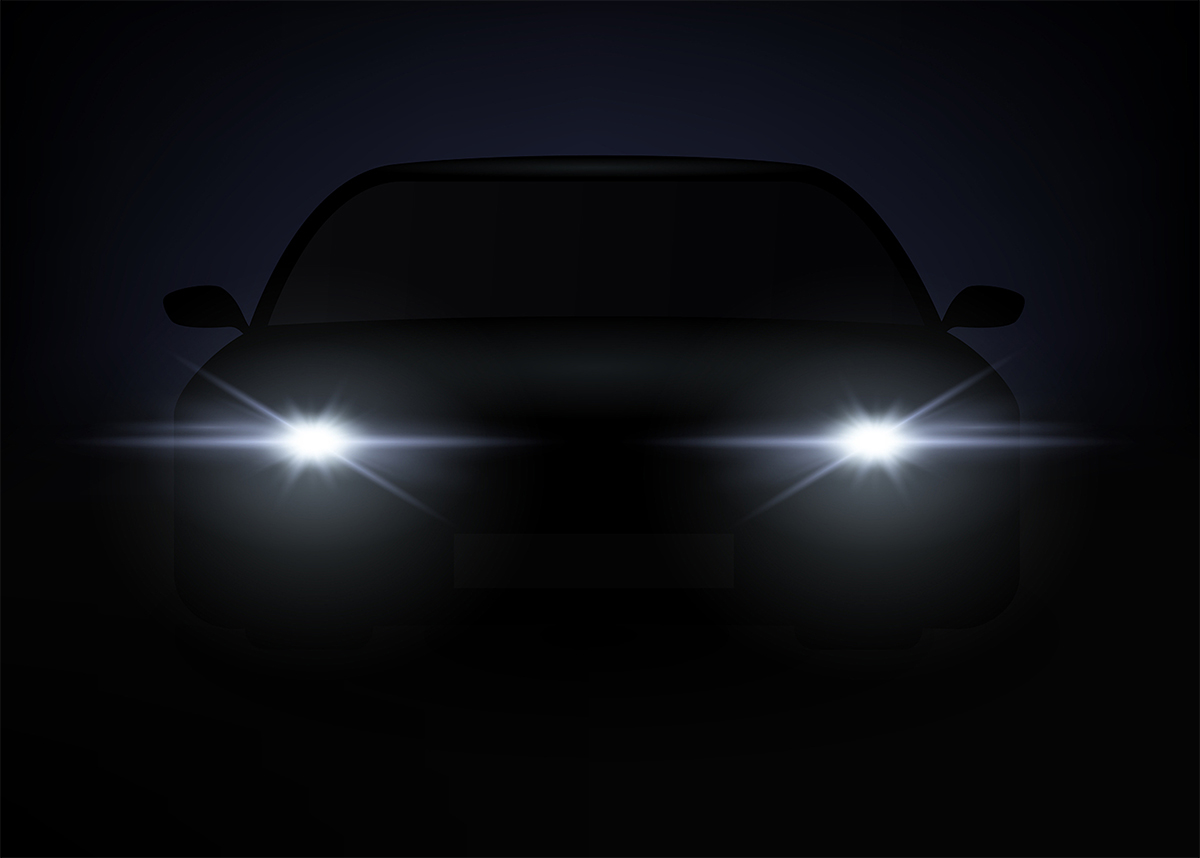

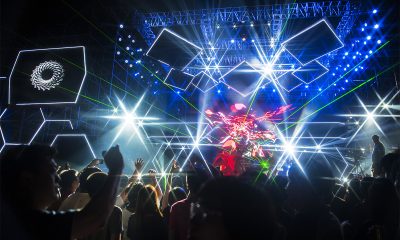
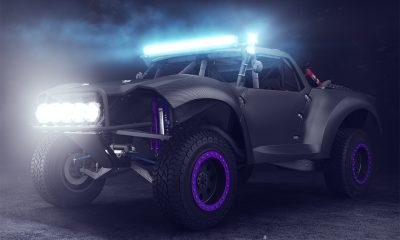
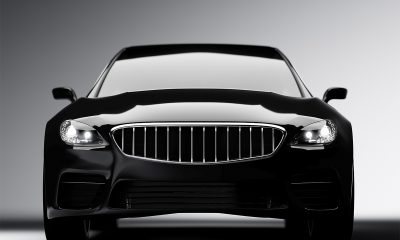
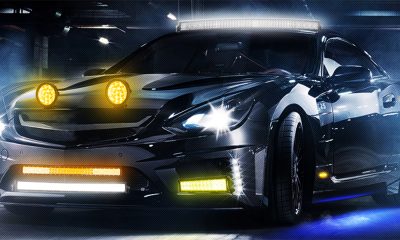
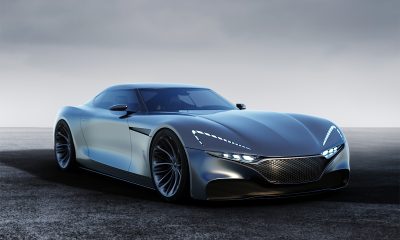
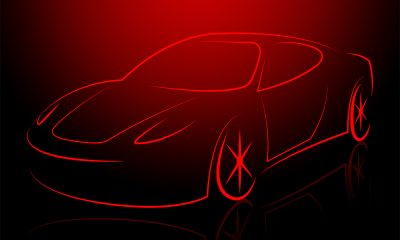
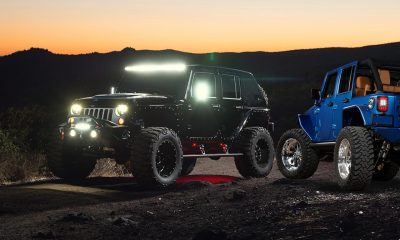
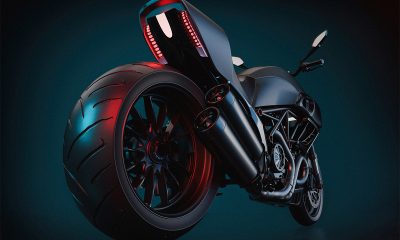


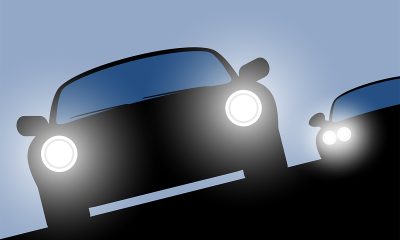





Loading...